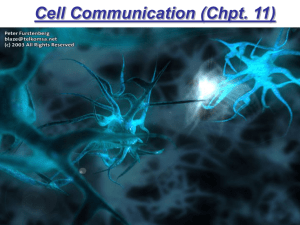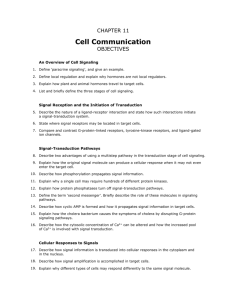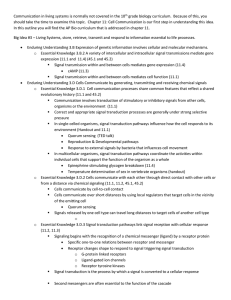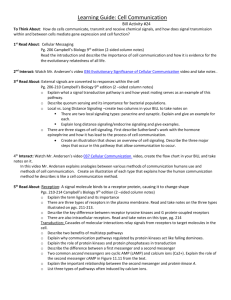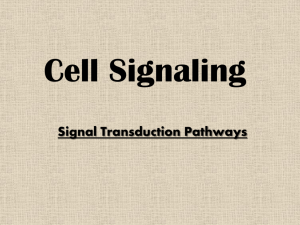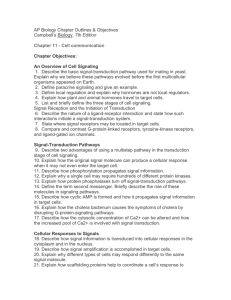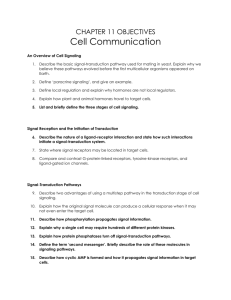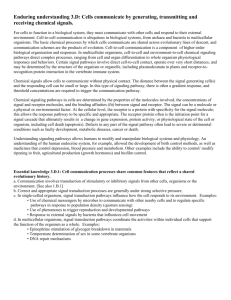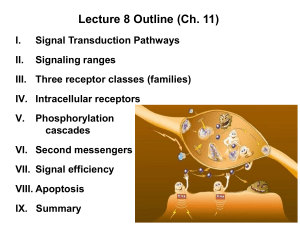Cell Communication Unit Curriculum Summary
advertisement
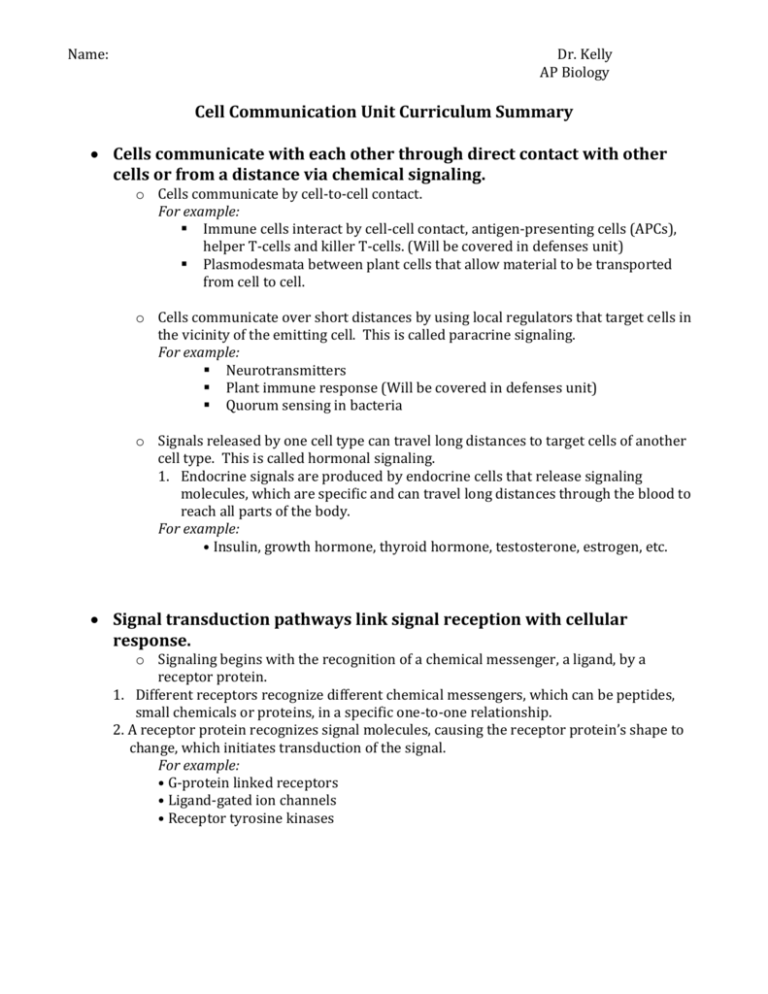
Name: Dr. Kelly AP Biology Cell Communication Unit Curriculum Summary Cells communicate with each other through direct contact with other cells or from a distance via chemical signaling. o Cells communicate by cell-to-cell contact. For example: Immune cells interact by cell-cell contact, antigen-presenting cells (APCs), helper T-cells and killer T-cells. (Will be covered in defenses unit) Plasmodesmata between plant cells that allow material to be transported from cell to cell. o Cells communicate over short distances by using local regulators that target cells in the vicinity of the emitting cell. This is called paracrine signaling. For example: Neurotransmitters Plant immune response (Will be covered in defenses unit) Quorum sensing in bacteria o Signals released by one cell type can travel long distances to target cells of another cell type. This is called hormonal signaling. 1. Endocrine signals are produced by endocrine cells that release signaling molecules, which are specific and can travel long distances through the blood to reach all parts of the body. For example: • Insulin, growth hormone, thyroid hormone, testosterone, estrogen, etc. Signal transduction pathways link signal reception with cellular response. o Signaling begins with the recognition of a chemical messenger, a ligand, by a receptor protein. 1. Different receptors recognize different chemical messengers, which can be peptides, small chemicals or proteins, in a specific one-to-one relationship. 2. A receptor protein recognizes signal molecules, causing the receptor protein’s shape to change, which initiates transduction of the signal. For example: • G-protein linked receptors • Ligand-gated ion channels • Receptor tyrosine kinases Name: Dr. Kelly AP Biology o Signal transduction is the process by which a signal is converted to a cellular response. 1. Signaling cascades relay signals from receptors to cell targets, often amplifying the incoming signals, with the result of appropriate responses by the cell. 2. Second messengers are often essential to the function of the cascade. For example: • Ligand-gated ion channels • Second messengers, such as cyclic GMP, cyclic AMP, calcium ions (Ca2+), and inositol triphosphate (IP3) 3. Many signal transduction pathways include: i. Protein modifications ii. Phosphorylation cascades in which a series of protein kinases add a phosphate group to the next protein in the cascade sequence Changes in signal transduction pathways can alter cellular response. o Conditions where signal transduction is blocked or defective can be deleterious, preventative or prophylactic. For example: • Diabetes, heart disease, neurological disease, autoimmune disease, cancer, cholera • Effects of neurotoxins, poisons, pesticides • Drugs like hypertensives, anesthetics, antihistamines and birth control drugs X Specific mechanisms of these diseases and action of drugs are beyond the scope of the course and the AP Exam. Timing and coordination of physiological events are regulated by multiple mechanisms. o In plants, physiological events involve interactions between environmental stimuli and internal molecular signals. 1. Phototropism, or the response to the presence of light 2. Photoperiodism, or the response to change in length of the night, that results in flowering in long-day and short-day plants X Memorization of the names, molecular structures and specific effects of all plant hormones are beyond the scope of the course and the AP Exam. o In animals, internal and external signals regulate a variety of physiological responses that synchronize with environmental cycles and cues. Name: Dr. Kelly AP Biology A variety of intercellular and intracellular signal transmissions mediate gene expression. o Signal transmission within and between cells mediates gene expression. For example: • Ethylene levels cause changes in the production of different enzymes, allowing fruits to ripen. Cell communication processes share common features that reflect a shared evolutionary history. o Communication involves transduction of stimulatory or inhibitory signals from other cells, organisms or the environment. o In single-celled organisms, signal transduction pathways influence how the cell responds to its environment. For example: • Use of chemical messengers by microbes to communicate with other nearby cells and to regulate specific pathways in response to population density (quorum sensing) • Response to external signals by bacteria that influences cell movement o In multicellular organisms, signal transduction pathways coordinate the activities within individual cells that support the function of the organism as a whole. For example: • Epinephrine stimulation of glycogen breakdown in mammals
